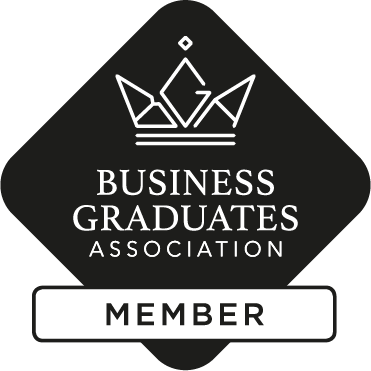University certificate
Scientific endorser

The world's largest school of business”
Introduction to the Program
With this 100% online MBA, you will master the most innovative operational strategies to optimize the production and logistics processes of organizations”

Logistics and Operations Management is a fundamental pillar in business development, as it encompasses multiple strategic, organizational, and technological processes that ensure operational efficiency. Moreover, the increasing digitalization in the corporate world has driven the need for executives to acquire new skills to optimize logistical flows, reduce costs, and improve decision-making. In this context, automation, data analytics, and artificial intelligence have transformed operations, enabling companies to be more competitive and respond more agilely to market changes.
As a result, professionals in the sector are faced with the challenge of updating their knowledge and expanding their strategic vision to take on higher-responsibility roles within their organizations. This need gives rise to the MBA in Logistics and Operations Management (COO, Chief Operating Officer) at TECH Global University. The curriculum delves into key aspects of supply chain management, including optimization methodologies, strategic planning, and leadership in logistics environments. Thus, upon completing the program, professionals will be prepared to occupy high-level positions in global companies, increasing their value in the labor market.
At the same time, this MBA features a 100% online methodology, enabling participants to study without relinquishing their professional or personal responsibilities. Additionally, the content is available 24/7, and can be accessed from any device with internet connectivity, with the option to download for offline consultation.
Moreover, a prestigious International Guest Director will deliver 10 comprehensive Masterclasses.
A renowned International Guest Director will offer 10 groundbreaking Masterclasses on the latest trends in Logistics and Operations Management”
This Masters Degree in MBA in Logistics and Operations Management (COO, Chief Operating Officer) contains the most complete and up-to-date program on the market. The most important features include:
- The development of practical case studies presented by experts in Logistics and Operations Management
- The graphic, schematic, and practical contents with which they are created, provide scientific and practical information on the disciplines that are essential for professional practice
- Practical exercises where self-assessment can be used to improve learning
- Its strong focus on innovative methodologies in Logistics and Operations Management
- Theoretical lessons, questions to the expert, debate forums on controversial topics, and individual reflection assignments
- Content that is accessible from any fixed or portable device with an internet connection
You will apply innovative strategies and advanced tools to optimize logistics and operational management in highly competitive business environments”
The program includes a faculty of professionals from the field of Logistics and Operations Management, who bring their real-world experience into the program, alongside renowned specialists from leading companies and prestigious universities.
The multimedia content, developed with the latest educational technology, will provide the professional with situated and contextual learning, i.e., a simulated environment that will provide an immersive learning experience designed to prepare for real-life situations.
This program is designed around Problem-Based Learning, whereby the student must try to solve the different professional practice situations that arise throughout the program. For this purpose, the professional will be assisted by an innovative interactive video system created by renowned and experienced experts.
You will be capable of effectively managing the supply chain, from sourcing inputs to product distribution"

You will have access to a learning system based on repetition, with natural and progressive teaching throughout the entire syllabus"
Why study at TECH?
TECH is the world’s largest online university. With an impressive catalog of more than 14,000 university programs available in 11 languages, it is positioned as a leader in employability, with a 99% job placement rate. In addition, it relies on an enormous faculty of more than 6,000 professors of the highest international renown.

Study at the world's largest online university and guarantee your professional success. The future starts at TECH”
The world’s best online university according to FORBES
The prestigious Forbes magazine, specialized in business and finance, has highlighted TECH as “the world's best online university” This is what they have recently stated in an article in their digital edition in which they echo the success story of this institution, “thanks to the academic offer it provides, the selection of its teaching staff, and an innovative learning method aimed at educating the professionals of the future”
A revolutionary study method, a cutting-edge faculty and a practical focus: the key to TECH's success.
The most complete study plans on the university scene
TECH offers the most complete study plans on the university scene, with syllabuses that cover fundamental concepts and, at the same time, the main scientific advances in their specific scientific areas. In addition, these programs are continuously being updated to guarantee students the academic vanguard and the most in-demand professional skills. In this way, the university's qualifications provide its graduates with a significant advantage to propel their careers to success.
TECH offers the most comprehensive and intensive study plans on the current university scene.
A world-class teaching staff
TECH's teaching staff is made up of more than 6,000 professors with the highest international recognition. Professors, researchers and top executives of multinational companies, including Isaiah Covington, performance coach of the Boston Celtics; Magda Romanska, principal investigator at Harvard MetaLAB; Ignacio Wistumba, chairman of the department of translational molecular pathology at MD Anderson Cancer Center; and D.W. Pine, creative director of TIME magazine, among others.
Internationally renowned experts, specialized in different branches of Health, Technology, Communication and Business, form part of the TECH faculty.
A unique learning method
TECH is the first university to use Relearning in all its programs. It is the best online learning methodology, accredited with international teaching quality certifications, provided by prestigious educational agencies. In addition, this disruptive educational model is complemented with the “Case Method”, thereby setting up a unique online teaching strategy. Innovative teaching resources are also implemented, including detailed videos, infographics and interactive summaries.
TECH combines Relearning and the Case Method in all its university programs to guarantee excellent theoretical and practical learning, studying whenever and wherever you want.
The world's largest online university
TECH is the world’s largest online university. We are the largest educational institution, with the best and widest online educational catalog, one hundred percent online and covering the vast majority of areas of knowledge. We offer a large selection of our own degrees and accredited online undergraduate and postgraduate degrees. In total, more than 14,000 university degrees, in eleven different languages, make us the largest educational largest in the world.
TECH has the world's most extensive catalog of academic and official programs, available in more than 11 languages.
Google Premier Partner
The American technology giant has awarded TECH the Google Google Premier Partner badge. This award, which is only available to 3% of the world's companies, highlights the efficient, flexible and tailored experience that this university provides to students. The recognition as a Google Premier Partner not only accredits the maximum rigor, performance and investment in TECH's digital infrastructures, but also places this university as one of the world's leading technology companies.
Google has positioned TECH in the top 3% of the world's most important technology companies by awarding it its Google Premier Partner badge.
The official online university of the NBA
TECH is the official online university of the NBA. Thanks to our agreement with the biggest league in basketball, we offer our students exclusive university programs, as well as a wide variety of educational resources focused on the business of the league and other areas of the sports industry. Each program is made up of a uniquely designed syllabus and features exceptional guest hosts: professionals with a distinguished sports background who will offer their expertise on the most relevant topics.
TECH has been selected by the NBA, the world's top basketball league, as its official online university.
The top-rated university by its students
Students have positioned TECH as the world's top-rated university on the main review websites, with a highest rating of 4.9 out of 5, obtained from more than 1,000 reviews. These results consolidate TECH as the benchmark university institution at an international level, reflecting the excellence and positive impact of its educational model.” reflecting the excellence and positive impact of its educational model.”
TECH is the world’s top-rated university by its students.
Leaders in employability
TECH has managed to become the leading university in employability. 99% of its students obtain jobs in the academic field they have studied, within one year of completing any of the university's programs. A similar number achieve immediate career enhancement. All this thanks to a study methodology that bases its effectiveness on the acquisition of practical skills, which are absolutely necessary for professional development.
99% of TECH graduates find a job within a year of completing their studies.
Executive Master's Degree MBA in Logistics and Operations Management (COO, Chief Operating Officer)
In the current commercial environment, the logistics sector plays a fundamental role in business development. Therefore, it is essential for professionals in this field to qualify through high-quality programs that provide the necessary knowledge to effectively address the challenges of the labor market. The MBA in Logistics and Operations Management (COO, Chief Operating Officer) at TECH Global University offers a curriculum updated with the latest advancements in the field. As a result, students have the opportunity to qualify through high-quality educational content. Additionally, with the new skills acquired, professionals will be equipped with the capabilities necessary to develop logistics processes effectively, applying strategies that optimize customer service and the profitability of the company.
Postgraduate in Logistics and Operations Management 100% Online
Throughout the Executive Master's Degree MBA in Logistics and Operations Management, students will gain a comprehensive view of the company, delving into its mission, values, innovation, communication, and financial management. This will allow them to understand the company’s main objectives and, based on this knowledge, design plans that align with the set goals. Additionally, students will learn how to implement techniques to develop interaction between the store and logistics, manage the catalog, handle purchases and supply chain processes, as well as other areas of great importance in professional practice. Moreover, the program will enhance the individual's skills in talent management, thereby enabling the formation of a competent team that optimizes processes.







